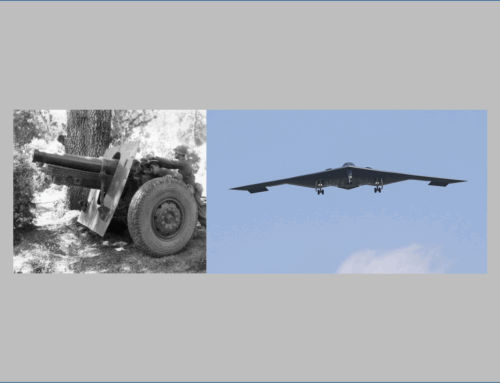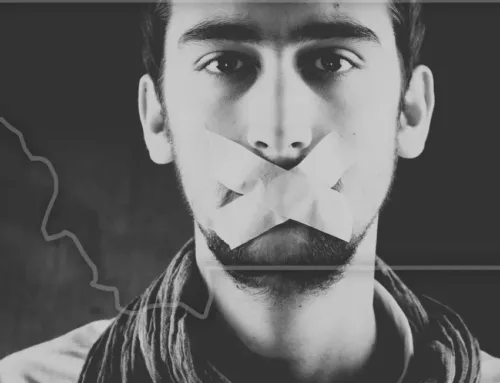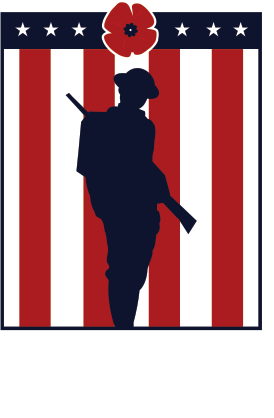To Be as Young (or as Old) as You Feel
Published: 15 December 2024
By Jill Frahm
Special to the Doughboy Foundation website

Alice Raymond and Louise LeBreton in the Signal Corps Barracks at Neufchateau, France in December 1918
Alice Raymond and Louise LeBreton in the Signal Corps Barracks at Neufchateau, France in December 1918. Louise was only 19 years old when she became one of the World War I U.S. Army Signal Corps female telephone operators, who were known as the Hello Girls..
In studying the Hello Girls – the American telephone operators who supported the U.S. soldiers in France during World War I – determining who the oldest and youngest Hello Girls were should be easy. Right? Just check their Army service records. Raymonde LeBreton was the youngest at age 18 and Elise Montgomery was the oldest at age 44. End of story.
The problem is that these women were not the youngest or the oldest operator. General Pershing’s 1917 call for female telephone operators to serve with the AEF in France was dream come true for many women eager to support the allied cause in this “war to end all wars.” Because so many women were determined to go, more than one shaped her application – even outright lied on it – to be the woman she thought the Signal Corps was looking for. So, with that in mind, who were the oldest and youngest operators?
While a lot more research needs to be done to determine how many and to what extent operators invented a past to be the most attractive applicant possible, age is one characteristic that can be checked. Inconsistencies can be found within the personnel records themselves. In some cases, deception comes to light when the birthdate on their application for discharge papers at the end of the war does not match the date they gave on their application. Another way to check is by comparing birth years in personnel records with those on gravestones. While neither method is completely reliable, it makes it clear that stretching the truth about an age was not an isolated incident. Several of operators did their best to fit the age thought appropriate for this adventure, even if it meant bending the truth.
When General Pershing put out his initial call for operators, he said nothing about how old the women selected should be. That was left to the discretion of the men hiring the Hello Girls. Some seem to have adopted the guidelines expressed by Signal Corps Captain William S. Vivian in a letter to Lieutenant E. J. Wessen. “My personal opinion,” Vivian said, “is that they can be anywhere from twenty to thirty and should not exceed thirty five.”[1] Some operator applicants were convinced that there were other age requirements. Margaret Hope Kervin, for example, believed that an operator had to be thirty to qualify and begged the army “not to hold it against me that I have not yet reached that mark.”[2] Such perceptions led to deception.
My first indication of deception was when I received the personnel folder of Margaret Hope Kervin. In her early twenties at the time of her application, Kervin was desperate to get overseas as shown by her many letters to the U.S. Army before being accepted as a Hello Girl. She trained as a pilot with the idea that woman fliers would be needed in France, even offering the army suggestions on how to drop poison gas on the enemy from a plane. She considered joining a British or Canadian unit until the telephone operator opportunity appeared. While there is no indication that Kervin actually lied about her age, on her application for a discharge certificate in 1922 she wrote, “I lied to get in. Heard that they would not take us unless we were thirty-three or twenty-five, anyway now I am telling the truth, don’t remember what age I gave originally.”[3]
Among the youngest operators to serve in France were Louise and Raymonde LeBreton. Born in France, the sisters were living in California at the time of their application. Both were fluent in French. Louise had some previous operating experience, and although Raymonde had none, her ability in French and knowledge of French customs made her seen as “very valuable” to the telephone service. Despite being ideal candidates, both women knew their ages would present a problem. As a result, Raymonde claimed to be born in 1899, though born in 1900; Louise claimed to be born in 1897, though really born in 1899. Despite the subterfuge, Raymonde’s age still caused concern. While confident of her abilities, J. P. Downs, General Supervisor of Traffic, Pacific Telephone Company, stated that he “[did] not feel as certain regarding her age.” Downs suggested that these concerns would be eliminated if Raymonde was stationed near or at the same telephone office as her elder sister.[4] It seems likely that that neither LeBreton sister would have gone to France if it was known that Louise was only nineteen and Raymonde only seventeen.
Marguerite Chenot claimed to be twenty years old when in reality she was only seventeen, twenty days younger than Raymonde. Like the LeBreton sisters, Chenot was born in France, but her family moved to the United States she was sixteen months old. The fact that she spoke French fluently and had some experience operating a switchboard made her an excellent candidate to be a Hello Girl. Since she managed to convince the Signal Corps that she was twenty years old, there seems to have been little concern about her age. Chenot was a member of the fourth group of operators to arrive in France.
Such deception by the youngsters led me to wonder if woman at the other end of the age spectrum had done the same thing. How many older women lied about their ages to gain this opportunity of a lifetime? There is evidence that women wanting to serve in the Red Cross and other overseas organizations during World War I subtracted years off their ages. Had the Hello Girls done the same? The answer is a definite yes.
Telling the truth if over forty could kill your chances of becoming a Hello Girl. Elise Montgomery, a member of the seventh group of operators, found this out the hard way. She claimed to be forty-three and seems to have told the truth. After meeting with her, F. B. Hagen the Division Traffic Superintendent of Southern New England Telephone Company reported that, “I found Miss Montgomery satisfactory for this work with the exception that her age (43 years) exceeds the age limit of 35 years which has been set for such service.”[5] The doctor preforming Montgomery’s medical examination reported, “This applicant is physically suited for employment, the only element of doubt being that of age and the approaching date of menopause.”[6] Montgomery fought back by arguing that she was “brought up to swim, to ride, and to rough it in the woods of the West” and was better able to “endure the hardships attendant on service abroad” than a “city-bred girl”.[7] Montgomery was rejected twice because of her age but finally was accepted the third time around. After several months of training, now at age forty-four, she became a member of the seventh group of operators, who never made it to France.
Also in the seventh group was the woman who seems to have stretched the truth to the greatest extent – Nancy Dempsy Baines – who was likely the oldest woman hired to be a Hello Girl. Widowed some time before, Baines was a long-time telephone company employee. She served as chief operator for over a decade before becoming a telephone instructor, most recently for the AEF Hello Girls in previous units. While Baines claimed to be thirty-five years old, her headstone shows that she was really forty-five. However, it may be because of her many years of employment by the telephone company that her deception was successful. The individual who interviewed her seemed to be suspicious of the information she provided because there is a note on her record that says, “The information given below was volunteered by Mrs. Baines as part of her record….”[8] No other operator’s interview solicited such a comment. However, she had long proven herself to be an excellent employee and chief operator. The telephone company knew her and knew what she was capable of. Given her skills, it may be that the AEF overlooked uncertainty about her age to have her experience in France.
And the operators who made it to France? Who was the eldest among them? The oldest operators who made it to France seem to have been Albertine Belhumeur in Group four, and Marguerite Mahoney and Ena Robb both in Group five. Because of many differences between military and civilian records, it can be challenging to ascertain if these women were telling the truth or not in connection with their ages.
Born in 1877, Albertine Belhumeur was about forty years old when she applied to be an operator. Her husband died in 1909, and their son was in boarding school in France at the time of her application which made her available for service. Although upfront about her age and her gray hair, interviewer Mr. Allan was reported that she was, “young in appearance and activity.”[9] There seems to have been surprisingly little concern about Belhumeur’s age. Still, in her service record, two years were subtracted from her age, showing her about thirty-eight at time of application and not forty. It is impossible to say if this was a simple typo or an effort to shed years.[10]
Marguerite Mahoney was also born in 1877, although it is unclear whether or not she was older than Belhumeur. Although Mahoney had no knowledge of French, she was a very experienced operator with over a decade of experience including years in a supervisory role. Mahoney claimed to be thirty-six, escaping the scrutiny faced by others. However, civilian records and her gravestone clearly show that she was over forty at the time of application, and thus perhaps the oldest Hello Girl in France.
Ena Robb was probably about thirty-eight at the time of her application and seems to have been truthful about her age. While over thirty-five, there seems to be little if any concern about her age. In fact, three of her four letters of recommendation describe her as a “young woman” which may say more about the age of the recommender rather than Robb herself. While her age varies in later sources, the date of birth shown on her death certificate matches that in her military record, indicating that she likely gave her correct age.[11]
So, in the end, my initial assumption was wrong. The oldest operator hired was Nancy Dempsey Baines at age forty-five and the youngest was Marguerite Chenot at age seventeen. Perhaps further research will uncover even older or younger operators. However, all this proves that that these women were so eager for this adventure of a lifetime, they were willing to bend the truth to get there. As historians continue to examine the lives of the Hello Girls, it will be interesting to see what other subterfuge comes to light.
[1] Capt. William S. Vivian to Lieut. E.J. Wessen. December 28th 1917. National Archives Record Group 111, Box 398, “Appointments” folder.
[2] Hope Kervin to Chief Signal Officer, December 20, 1917; Personnel (201) Folder of Margaret Hope Kervin; National Archives Civilian Personnel Records Center, St. Louis, MO.
[3] “Application got Certificate in Lieu of Lost or Destroyed Discharge Certificate;” Personnel (201) Folder of Margaret Hope Kervin; National Archives Civilian Personnel Records Center, St. Louis, MO.
[4] Official Telegram from J. P. Downs to R. F. Estabrook, January 19, 1918; Personnel (201) Folder of Raymonde LeBreton; National Archives Civilian Personnel Records Center, St. Louis, MO.
[5] “Miss Elsie Montgomery, Operator”; 231.3 (WW) Overseas Telephone Operators (7th Group); Record Group 111; National Archives Building, College Park, MD, p. 507.
[6] “Miss Elsie Montgomery, Operator”; 231.3 (WW) Overseas Telephone Operators (7th Group); Record Group 111; National Archives Building, College Park, MD, p. 509.
[7] “Miss Elsie Montgomery, Operator”; 231.3 (WW) Overseas Telephone Operators (7th Group); Record Group 111; National Archives Building, College Park, MD, p. 508.
[8] “Mrs. Nancy Dempsey Baines, Supervisor”; 231.3 (WW) Overseas Telephone Operators (7th Group); Record Group 111; National Archives Building, College Park, MD, p. 375.
[9] “First Operators’ Unit – Interview;” Personnel (201) Folder of Albertine Belhumeur; National Archives Civilian Personnel Records Center, St. Louis, MO.
[10] “Service Record;” Personnel (201) Folder of Albertine Belhumeur; National Archives Civilian Personnel Records Center, St. Louis, MO.
[11] Personnel (201) Folder of Ena Robb; National Archives Civilian Personnel Records Center, St. Louis, MO.
Jill Frahm is the History Instructor in the General Education Department of Dakota County Technical College in Minnesota. She is also the Roraract co-adviser and Co-Chair of the General Education Department. Jill holds a Ph.D. in History from the University of Minnesota, and an M.A. and B.A. in History from the University of Maryland. Before coming to DCTC, she was employed as both a public and academic historian for several organizations including the U.S. government.
External Web Site Notice: This page contains information directly presented from an external source. The terms and conditions of this page may not be the same as those of this website. Click here to read the full disclaimer notice for external web sites. Thank you.







